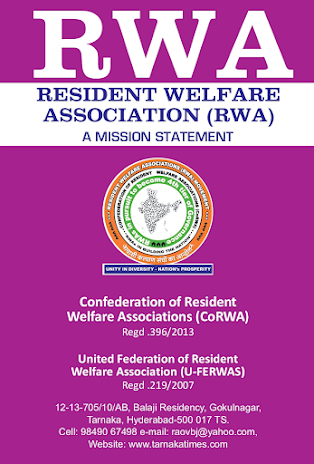By J.M.S. Nagarjunan
Population has been steadily increasing. So has been the encroachment of public places, particularly PLATFORMS/FOOTPATHS, ROAD SPACES, etc., not only by the Vendors/Hawkers, but also by rich shop-owners, political groups and also a section of the Governmental agencies like Electricity Department, Telephones, Police, etc., besides places of religious worship. Flag posts, banners, hoardings (commercial and political), hawkers, shops, places of worship, eat-outs’ chairs/tables, tea/coffee shops, storing of construction materials, car/vehicle parks, PCOs., cable TV wirings/posts, temporary sales booths, water distribution kiosks etc. proliferate footpaths. Government agencies are equally prone to this malady and install telephone boxes, electrical transformers/junction boxes, police posts/umbrellas, traffic signals, lamp posts, traffic dividers, storage space, waste bins, milk booths, toilets, etc.
Not surprisingly, pedestrians are forced to walk on the streets/roads/highways, thus becoming vulnerable and victims of various accidents caused by the speeding vehicles. accounting for about 35% of the fatal accidents on the road.
The Apex Court of the Country had as early as 1985 held that a Hawking Permission is only “a license given for carrying on a business on a road is only a permission to function as a HAWKER. IT DOES NOT GIVE THE HOLDER THE RIGHT TO ANY PARTICULAR SPOT ON THE ROAD (FOOTPATH)”. Notwithstanding this direction, the local administration, including Law Enforcement Agencies, have been turning a Nelson’s eye to the issue and failing in their duty to provide encroachment-free platforms. To quote the retired chief of the all-India Vigilance Commission, “the illegal booty generated by various elements from the hawkers, etc., in one particular city alone aggregates to Rs. 40 crore per month. No wonder, such “incentives “seek to nullify effective implementation of the orders of even the highest Court. While this unfortunate situation takes away the fundamental right of the citizen to move freely, without any hurdle, the STREET VENDORS ACT (2014) also called PROTECTION OF LIVELIHOOD AND REGULATION OF STREET VENDING virtually running counter to the above directions of the Supreme Court to ensure encroachment-free foot-paths. The Act recognizes the right of the vendors to carry on street-vending as part of their fundamental rights under Article 19 (1) (g) of the Constitution. The right of the commuter has also been simultaneously recognized as a fundamental right under Article l9 (1) (d).
It is to be noted that while the Street Vendors Act professes to harmonize the two conflicting positions, it virtually infringes on the rights of pedestrians, by permitting vending zones in the streets. The Law Enforcement Agencies having been lackadaisical in their approach to safeguard the interests of commuters over decades, the vendors with the assistance of local politicians and other interests are certain to continue to hold sway over the platforms, thus forcing the pedestrians to walk on the roads risking their very lives.
SOLUTION
While the right of the Street Vendors is well appreciated and recognized, separate markets/malls may be constructed by the local administration at convenient locations to accommodate identified street vendors as per the 2016 cut-off date prescribed by many States at affordable rent (as in the case of the Pondy Bazaar vendors of the busy locality of T. Nagar, Chennai). Thus, the Vendors can be facilitated to eke their livelihood, and the commuters/pedestrians are also assured of exercising their right to have free movement on the platform/footpath, avoiding walking on the roads and the attendant risks to their lives.
(This article is from the compendium published to coincide with the 7th National Conference of RWAs held on November 16-17, 2019, at New Delhi.)
Editorial
Some Proposals : Reform Land Administration and re-distribution of Revenue Department functions in the Districts
Tarnaka Times-
June 07, 2019
Popular Posts

RWAs - Do They Require Re-registration?
June 06, 2020

Stay Safe From These Monsoon Health Hazards
June 23, 2018

A Citizen’s Letter to his Chief Minister
May 15, 2020
Senior Citizens
3/Senior citizens/post-list
Created By SoraTemplates | Distributed By Blogger Themes




0 Comments